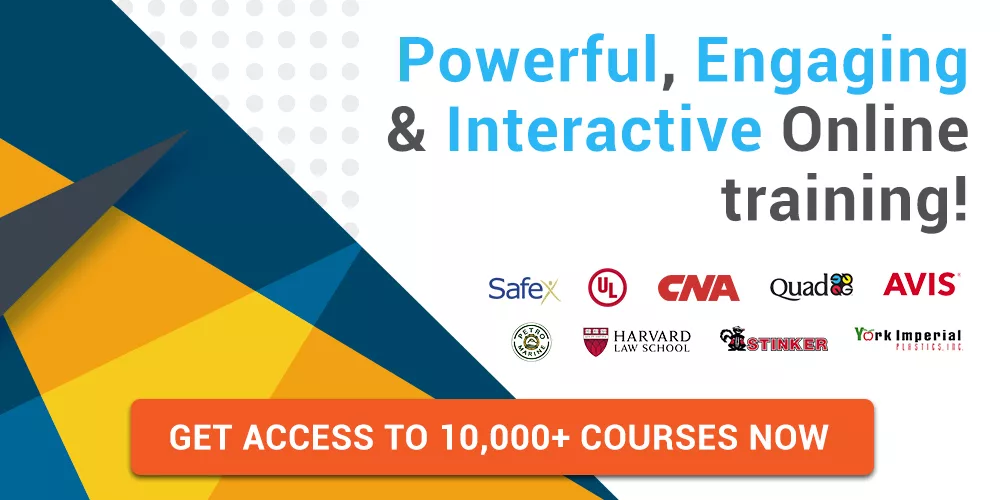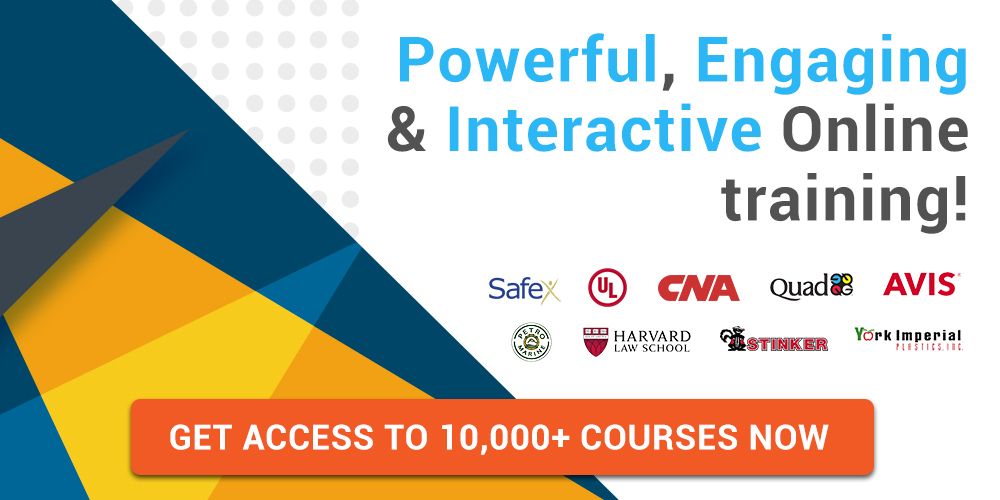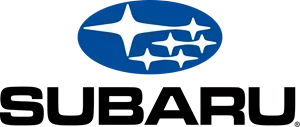The PLE VS. The Learning Management System: A Comparative Analysis
In the last two decades, online learning has taken over the education landscape. Technological advancements and a deeper understanding of how people learn are driving this sector. To up the ante, two prominent systems have emerged in this arena: the Personal Learning Environment (PLE) and the Learning Management System (LMS).
These systems represent fundamentally different approaches to education. The PLE focuses on the learner, while the LMS is institution- or course-centered.
This blog will discuss the distinctions between these two systems by learning their definitions, features, benefits, and challenges. It will also help you make a choice between these two emerging forces. You just have to stay with us until the end.
Save Thousands Of Dollars With Coggno Prime Subscription
Understanding The Learning Management System (LMS)
Definition And Overview
A Learning Management System (LMS) is a software application that administers, documents, tracks, reports, and delivers educational courses, training programs, or learning and development programs.
Educational institutions and corporations use the LMS to manage and deliver learning content and resources to students or employees in a structured manner.
Also Check: What Does LMS Mean: Uses, Benefits, and Types of LMS
Features Of An LMS
- Centralized Learning: All learning materials and resources are centralized in one location, making it easy for learners to access the content.
- Course Management: Educators can create, manage, and deliver courses. It includes enrolling students, assigning tasks, grading, and tracking progress.
- Content Delivery: Supports various content formats, including text, video, and interactive elements.
- Assessment and Evaluation: Tools for creating quizzes, assignments, and exams, as well as tracking and analyzing learners’ performance.
- Communication Tools: Forums, chat, and email tools facilitate interaction between educators and learners.
- Reporting and Analytics: Detailed reports on learners’ progress, engagement, and performance.
Also Check: A Learning Management System for a Better Workplace
Benefits Of An LMS
- Efficiency: Streamlines the delivery and management of educational content.
- Consistency: Ensures that all learners receive the same material and instructions.
- Scalability: Can handle a large number of learners and courses.
- Accessibility: Learners can access content from anywhere and at any time.
- Compliance: Useful for corporate training to ensure regulatory compliance.
Challenges Of An LMS
- Inflexibility: Rigid and less adaptable to individual learners’ needs.
- Learner Engagement: It can be impersonal, leading to lower engagement and motivation.
- Cost: Implementation and maintenance can be expensive.
Understanding The Personal Learning Environment (PLE)
Definition And Overview
A Personal Learning Environment (PLE) is a system that enables learners to take control of and manage their own learning. It includes setting learning goals, managing content and learning processes, and communicating with others in the context of learning. Unlike the LMS, which is institution-centered, the PLE is learner-centered, allowing for a more personalized and flexible learning experience.
Features Of A PLE
- Customization: Learners can tailor the learning environment to their preferences and needs.
- Resource Management: Ability to gather and organize various learning resources from multiple sources.
- Goal Setting: Tools to set and track personal learning goals.
- Collaboration: Facilitates communication and collaboration with peers, mentors, and experts.
- Integration: Combines different tools and platforms into a cohesive learning experience.
- Reflection: Encourages self-reflection and self-assessment to enhance learning outcomes.
Benefits Of PLE
- Personalization: Learning is tailored to individual needs, preferences, and pace.
- Autonomy: Empowers learners to take control of their education.
- Engagement: Higher engagement through active participation and personal relevance.
- Flexibility: Learning can happen anytime, anywhere, and is not confined to a classroom or set schedule.
- Lifelong Learning: Supports continuous and self-directed learning beyond formal education.
Challenges Of A PLE
- Self-Discipline: Requires a high level of self-motivation and discipline from learners.
- Resource Overload: The vast amount of available resources can be overwhelming.
- Technological Proficiency: Learners need to be comfortable using various technologies and tools.
- Lack of Structure: Flexibility and autonomy can lead to a lack of clear structure and direction.
Must Read: LMS Revolutionizing Professional Development In 2024
Comparing The PLE And The LMS
Approach To Learning
The fundamental difference between the PLE and the LMS lies in their approach to learning. The LMS is structured, controlled, and managed by an institution, focusing on delivering a consistent learning experience to a group of learners. Conversely, the PLE is unstructured, learner-driven, and flexible, emphasizing individual learning paths and personal goals.
Control And Management
In an LMS, the educators and administrators are in charge. They design the courses, create the content, and manage the delivery. In contrast, a PLE places control in the hands of the learners, allowing them to choose what, how, and when they learn.
Learning Experience
The LMS offers a standardized learning experience, which ensures consistency but can lack personalization. The PLE provides a personalized learning experience that caters to individual preferences and needs but requires more effort from learners to manage their learning.
Technology And Tools
Both systems leverage technology but in different ways. An LMS is a centralized system with built-in tools for course management, content delivery, and assessment. PLE integrates various tools and platforms, allowing learners to create a customized learning environment using resources from multiple sources.
Assessment And Feedback
In an LMS, assessment is formal and standardized, with grades and feedback provided by educators. In a PLE, assessment can be more informal and self-directed, with learners engaging in self-assessment and peer feedback.
The Future Of E-Learning: Integrating PLE And LMS
While the PLE and LMS represent different philosophies and approaches to learning, the future of e-learning might lie in integrating the best of both systems. This hybrid approach can offer the structure and consistency of an LMS combined with the personalization and flexibility of a PLE.
Benefits Of Integration
- Balanced Learning Experience: Combining the strengths of both systems can create a more balanced and comprehensive learning experience.
- Enhanced Engagement: Personalization can increase engagement, while structure can provide clear guidance and support.
- Adaptability: A hybrid system can be more adaptable to different learning contexts and needs.
- Lifelong Learning Support: Supports both formal education and lifelong, self-directed learning.
Challenges Of Integration
- Complexity: Integrating two different systems can be complex and require significant resources.
- Training and Support: Educators and learners may need additional training to use a hybrid system effectively.
- Cost: The development and maintenance of an integrated system can be costly.
Must Read: LMS Integration In 2024: Types, Benefits, And Challenges
Practical Tips For Implementing A PLE Or LMS
Implementing An LMS
- Define Objectives: Clearly define the goals and objectives for implementing an LMS.
- Choose the Right System: Select an LMS that meets the needs of your institution and learners.
- Provide Training: Ensure that educators and learners are trained to use the system effectively.
- Monitor and Evaluate: Regularly monitor the system’s performance and gather feedback to make improvements.
Implementing A PLE
- Promote Autonomy: Encourage learners to take control of their learning and make decisions about their learning paths.
- Provide Resources: Offer a variety of resources and tools to support personalized learning.
- Support and Guidance: Provide support and guidance to help learners navigate their PLE.
- Encourage Reflection: Foster a culture of self-reflection and continuous improvement.
PLE Training System Vs. LMS Training System
Choosing between a Personal Learning Environment (PLE) training system and a Learning Management System (LMS) training system depends largely on the educational philosophy and goals of the organization or individual learners.
Benefits Of the PLE Training System:
- Personalization: PLE training emphasizes personalized learning experiences tailored to individual learner needs and preferences. It empowers learners to take ownership of their learning journey, fostering intrinsic motivation and engagement.
- Flexibility: PLEs offer flexibility in terms of content selection, learning pace, and learning environment. Learners can integrate various tools and resources from diverse sources, creating a customized learning experience that suits their learning style.
- Lifelong Learning Skills: PLE training equips learners with valuable lifelong learning skills by encouraging self-directed learning, goal setting, and resource management. These skills are essential in a rapidly evolving knowledge economy.
- Collaboration and Networking: PLEs promote collaboration and networking among learners, allowing them to connect with peers, mentors, and experts in their field of interest. This collaborative aspect enriches the learning experience and encourages knowledge sharing.
Benefits Of LMS Training System:
- Structured Learning Environment: LMS training provides a structured and organized approach to learning, which can benefit institutions and organizations requiring standardized content delivery and assessment.
- Efficiency and Scalability: LMSs are designed to efficiently manage large volumes of learners and courses. They streamline administrative tasks such as course creation, enrollment, grading, and reporting, making them suitable for formal education settings and corporate training programs.
- Consistency: LMS training ensures content delivery and assessment consistency across different courses and learners. This uniformity can be important for maintaining educational standards and meeting regulatory requirements.
- Assessment and Analytics: LMSs offer robust assessment tools and analytics capabilities, enabling educators to track learner progress, identify areas of improvement, and measure learning outcomes effectively.
Considerations For Choosing:
- Educational Philosophy: Organizations or individuals should consider whether they prioritize learner autonomy and personalized learning experiences (PLE) or structured content delivery and administrative efficiency (LMS).
- Audience and Context: The choice between PLE and LMS training systems may also depend on the audience and context of learning. For instance, corporate environments may favor LMSs for compliance training, while higher education institutions may explore PLEs to support diverse learner needs.
- Integration Possibilities: Some organizations may opt for a hybrid approach, integrating elements of both PLE and LMS to leverage the strengths of each system. This hybrid model can offer a balanced solution that meets varied learning preferences and organizational goals.
Note: The decision between a PLE training system and an LMS training system should align with the specific learning objectives, organizational culture, and technological capabilities of the institution or individual learners.
PLE Training FAQs
Q. What is PLE training, and who needs it?
PLE training refers to the following:
Professional Learning Education (PLE): This type of training focuses on professional development for educators. It’s not mandatory everywhere, but some states or districts might require it for educators to renew their licenses or advance their careers.
Q. What are the common topics covered in PLE training?
The topics covered in PLE training can be diverse. They can focus on improving teaching skills, integrating new curricula, or staying updated on educational policies.
Q. Where can I find PLE training?
You can find PLE training on the online platform Coggno. Coggno is an online learning management system and PLE training platform.
Bottom Line
The Personal Learning Environment (PLE) and the Learning Management System (LMS) are two distinct approaches to e-learning, each with its own set of benefits and challenges.
The PLE empowers learners to take control of their education, offering a personalized and flexible learning experience. In contrast, the LMS provides a structured and consistent approach to learning that is managed by institutions.
As e-learning continues to evolve, integrating personal learning management systems and LMS elements may offer a balanced solution that leverages the strengths of both systems. Understanding each approach’s unique features and benefits, educators and organizations can make informed decisions about how to best support their learners in the digital age.
Maximize Training, Minimize Costs With Coggno Prime



















